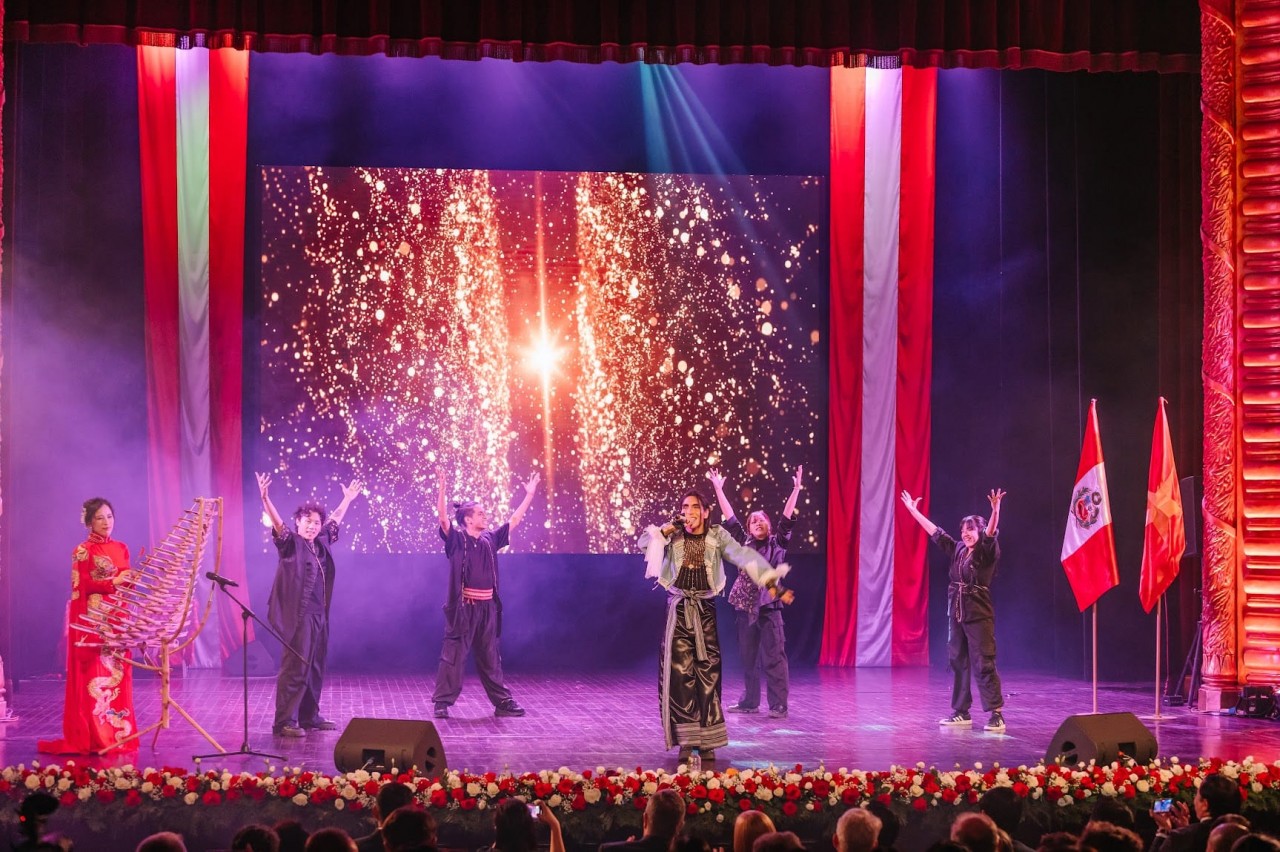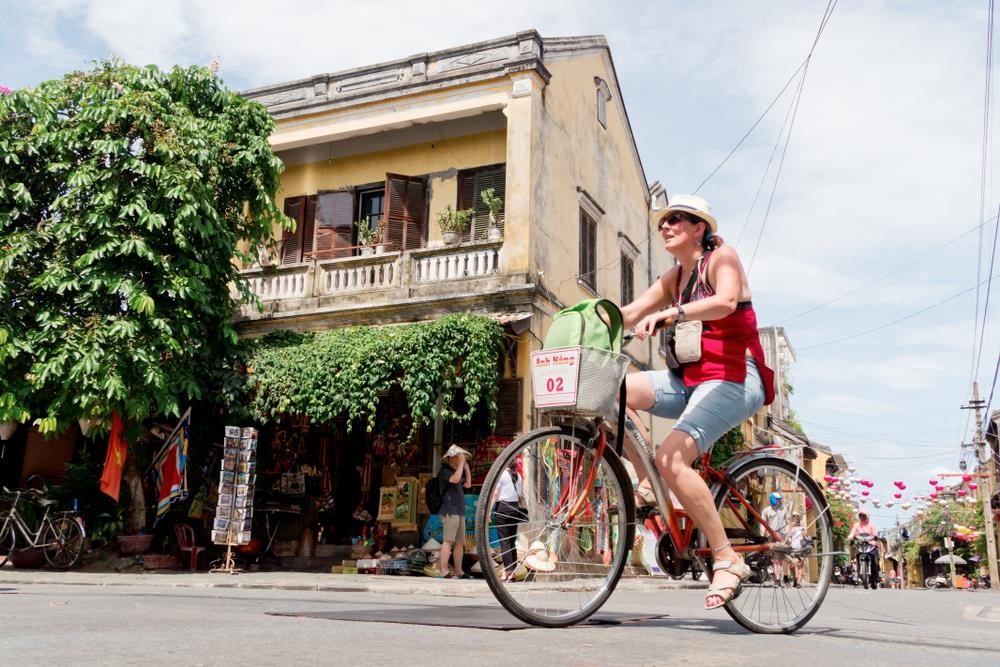Top 5 Most Stunning and Mysterious Places To Visit In Peru
Peru is as complex as its most intricate and exquisite weavings. Festivals mark ancient rites, the urban vanguard fuels innovation and nature bestows splendid diversity.
Why you should travel to Peru
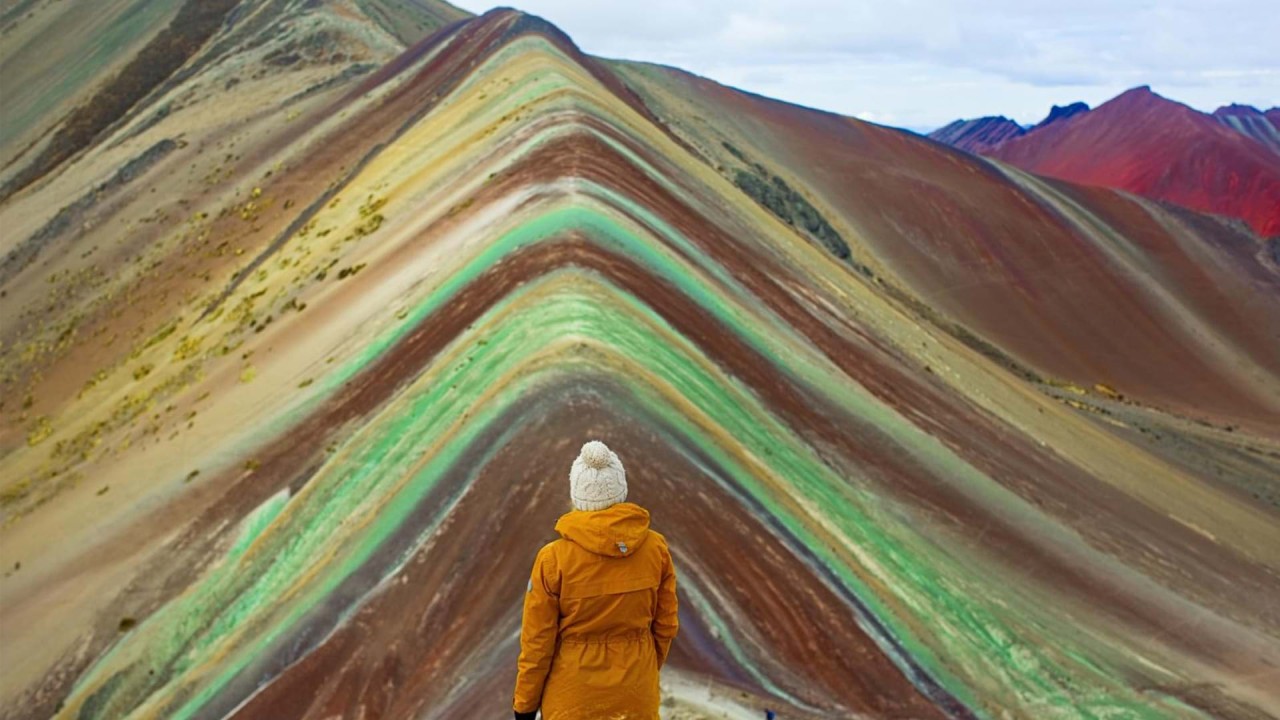 |
| Photo: Perú Travel |
Visitors flock to the glorious Inca citadel of Machu Picchu, yet this feted site is just a flash in a 5000-year history of Peruvian settlement. Explore the dusty remnants of Chan Chan, the largest pre-Columbian ruins in all the Americas. Fly over the puzzling geoglyphs etched into the arid earth at Nazca. Or venture into the rugged wilds that surround the enduring fortress of Kuélap. Lima’s great museums reveal in full detail the sophistication, skill and passion of these lost civilizations. Visit remote communities and see how old ways live on. Immerse yourself, and you'll leave Peru a little closer to the past.
Pleasure & the Palate
One existential question haunts all Peruvians: what to eat? Ceviche with slivers of fiery chili and corn, slow-simmered stews, velvety Amazonian chocolate – in the capital of Latin American cooking, the choices dazzle. Great geographic and cultural diversity has brought ingredients ranging from highland tubers to tropical jungle fruits to a complex cuisine with Spanish, indigenous, African and Asian influences. The truth is, fusion existed here long before it came with airs and graces. Explore the bounty of food markets. Sample grilled anticuchos (beef skewers) on the street corners and splurge a little on exquisite novoandina (Peruvian nouvelle cuisine).
Oh, Adventure
From downtown Lima to smack-dab in the middle of nowhere, this vast country is a paradise for the active traveler. Giant sand dunes, chiseled peaks and Pacific breaks lie just a few heartbeats away from the capital’s rush-hour traffic, and all the usual suspects – rafting, paragliding, zip-lines and bike trails – are present. Spot scarlet macaws in the Amazon or catch the sunset over ancient ruins. Take this big place in small bites and don't rush. Delays happen. Festivals can swallow you whole for days. And you'll realize: in Peru the adventure usually lies in getting there.
Life is a Carnival
Welcome to a place of mythical beliefs where ancient pageants unwind to the tune of booming brass bands. Peru's rich cultural heritage is never more real and visceral than when you are immersed streetside in the swirling madness of a festival. Deities of old are reincarnated as Christian saints, pilgrims climb mountains in the dead of night and icons are paraded through crowded plazas as once were the mummies of Inca rulers. History is potent here and still pulsing, and there is no better way to experience it.
Five most mysterious places to see in Peru
1. Kuelap Fortress
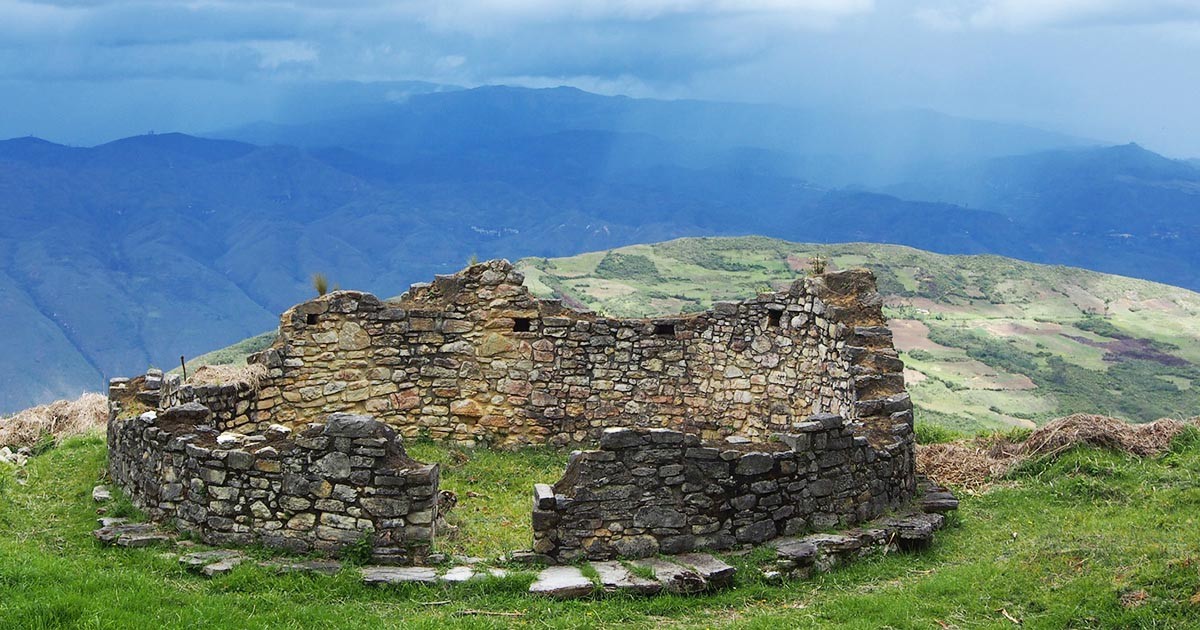 |
| Photo: Peru For Less |
The fortress of Kuelap is an archeological wonder, that for a long time was not accessible. And Kuelap is – archeologically and historically – much more important than other Incan sites. In fact, Kuelap explains why and how the Incan Empire was ended by Spain!
Kuelap, a mountaintop fortress city, rivals any ruins in the new world and comes complete with living quarters for thousands of residents and a stone wall fortification reaching 60 feet high running in circumference to the city.
Kuelap is considered the largest stone ruin site in the New World and is comprised of massive stone blocks nearly 10-times the volume of the blocks used in the Giza Pyramid.
The fortress of Kuélap consists of massive exterior stone walls containing more than four hundred buildings. The structure, situated on a ridge overlooking the Utcubamba Valley in northern Peru, is roughly 600 meters in length and 110 meters in width and is thought to have been built to defend against the Huari or other hostile peoples. Archaeological evidence shows that the structure was built around 500 AD and occupied until the mid-1500s (Early Colonial period).
Nearby the ruins can be found “purunmachus” or stone tombs built in the shape of people that would have housed the mummified remains of Chachapoyas royalty. (Somewhat similar to the cliff effigies in Torajaland, Indonesia.)
While you’re in the area, check out Gocta Waterfall. Inside one of the quaint lodges nearby, you can easily view this waterfall from your bedroom window or you can journey outside to see the striking waterfall up close. While discovered in 2000, Gocta Waterfall was measured in 2006. After the measurement, the waterfall gained its title as the third largest free-leaping waterfall in the world (right behind Angel Falls in Venezuela), falling at the height of 771 meters. Luckily for guests staying nearby, due to the extraordinary height, you can’t hear the water trickling down. Instead, the surrounding air becomes painted in rainbow-colored mist. Not only is the Gocta Waterfall an incredible sight, but you can also see the Peruvian Amazon Rainforest that makes up the mountains in the distance.
The journey by foot to the Gocta Waterfall takes about 2 hours there and 2 hours back. And if that seems a little too long, you can rent a horse to take you two-thirds of the way. Giddy up! Also located by the ruins are the “purunmachus,” or stone tombs, that housed the mummified remains of ancient Chachapoyas royalty. You’ll notice a similarity in these structures to the cliff effigies in Indonesia. The Chachapoyas disappeared due to a disease that was left by the Spanish. Visiting the “purunmachus” is an ideal way to pay your respects.
2. Chan Chan
During its heyday, about 600 years ago, Chan Chan, in northern Peru, was the largest city in the Americas and the largest adobe city on earth. Ten thousand structures, some with walls 30 feet high, were woven amid a maze of passageways and streets. Palaces and temples were decorated with elaborate friezes, some of which were hundreds of feet long. Chan Chan was fabulously wealthy, although it perennially lacked one precious resource: water. Today, however, Chan Chan is threatened by too much water, as torrential rains gradually wash away the nine-square-mile ancient city.
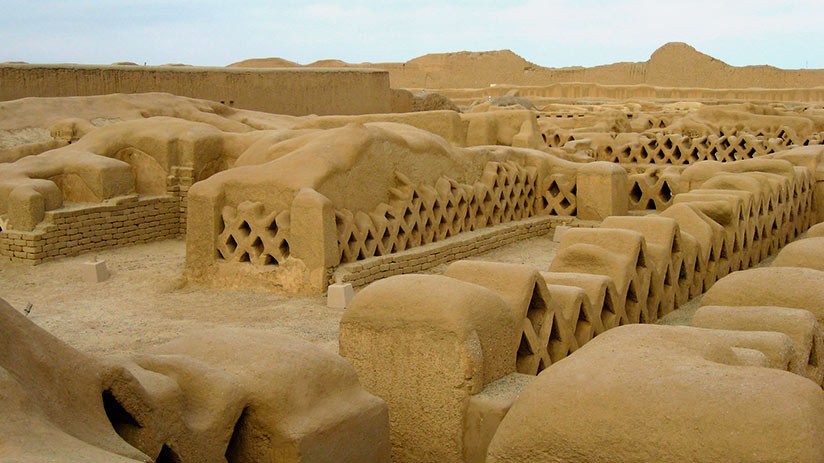 |
| Photo: Machu Travel Peru |
Located near the Pacific coast city of Trujillo, Chan Chan was the capital of the Chimú civilization, which lasted from A.D. 850 to around 1470. The adobe metropolis was the seat of power for an empire that stretched 600 miles from just south of Ecuador down to central Peru. By the 15th century, as many as 60,000 people lived in Chan Chan—mostly workers who served an all-powerful monarch, and privileged classes of highly skilled craftsmen and priests. The Chimú followed a strict hierarchy based on a belief that all men were not created equal. According to Chimú myth, the sun populated the world by creating three eggs: gold for the ruling elite, silver for their wives and copper for everybody else.
The Palacio Nik An (also called the Tschudi Complex, after a Swiss naturalist) is the only section of Chan Chan that’s partially restored. Parts of the site are covered with tent-like structures to protect from erosion. It is possible that other areas will open in the future, but until they are properly policed and signed, you run the risk of being mugged if you visit them.
At the Palacio Nik An you’ll find an entrance area with tickets, souvenirs, guides, bathrooms and drinks, but there's no longer a cafe so bring snacks. Guides hang around next to the ticket office.
The best option for a visit is with an organized guided tour from Trujillo or with a local site tour guide, as signage is extremely limited. There are usually English-, French-, German- and Italian-speaking guides available here. If you want to go it alone, the path is marked out with fish-shaped pointers and you can purchase a small booklet for S2 at the ticket checkpoint with descriptions of the different areas of the complex and a map.
3. Caral
Caral is the origin of Andean culture. More than five thousand years old, Caral developed at the same time as other great cultures in Mesopotamia, Egypt and China.
This sacred city is situated in the middle of the Supe Valley, amid fertile lands close to the sea, and was inhabited by skilled fishermen, farmers and expert seafarers. Among its many mud brick structures and circular plazas, six main pyramids once stood.
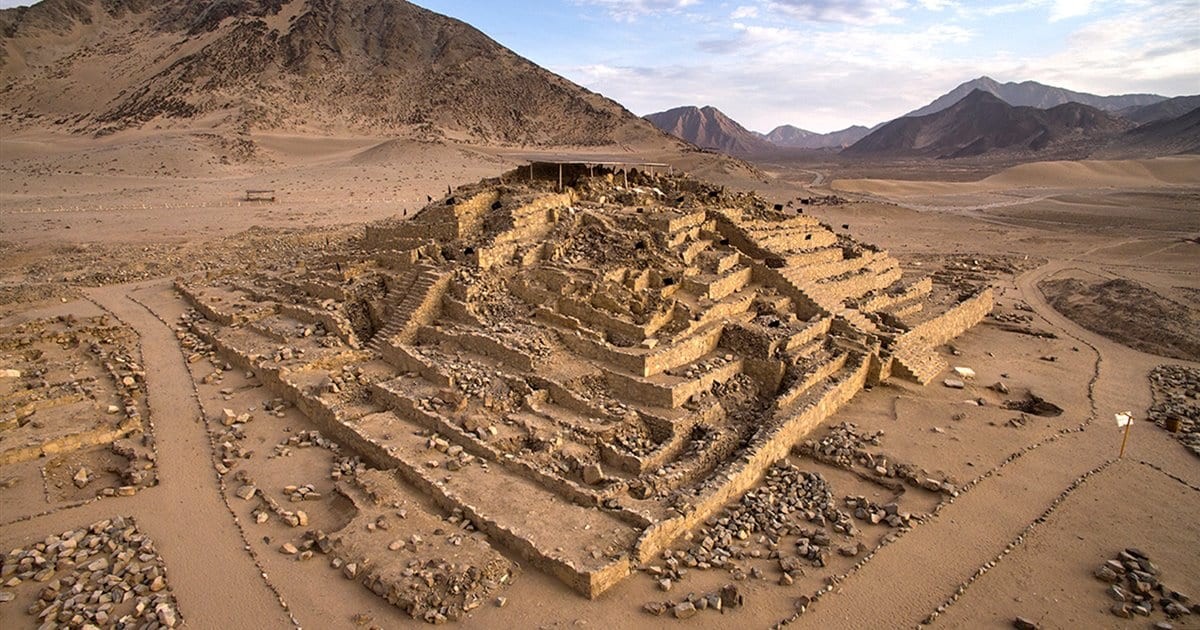 |
| Photo: Journey Machu Picchu |
Now a World Heritage Site, Caral was an imposing urban center, and its farming techniques and sustainable practices remain a reference point to this day.
Research developed by Peruvian archaeologist Ruth Shady Solís of San Marcos University suggests that Caral, as the 150-acre complex of pyramids, plazas and residential buildings is known, was a thriving metropolis as Egypt’s great pyramids were being built. The energetic archaeologist believes that Caral may also answer nagging questions about the long-mysterious origins of the Inca, the civilization that once stretched from modern-day Ecuador to central Chile and gave rise to such cities as Cuzco and Machu Picchu. Caral may even hold a key to the origins of civilizations everywhere.
Though discovered in 1905, Caral first drew little attention, largely because archaeologists believed the complex structures were fairly recent. But the monumental scale of the pyramids had long tantalized Shady. “When I first arrived in the valley in 1994, I was overwhelmed,” she says. “This place is somewhere between the seat of the gods and the home of man.” She began excavations two years later, braving primitive conditions on a tight budget. Fourteen miles from the coast and 120 miles north of Peru’s capital city of Lima, Caral lies in a desert region that lacks paved roads, electricity and public water. Shady, who enlisted 25 Peruvian soldiers to help with the excavations, often used her own money to advance the work.
What amazed archaeologists was not just the age but the complexity and scope of Caral. Pirámide Mayor alone covers an area nearly the size of four football fields and is 60 feet tall. A 30-foot-wide staircase rises from a sunken circular plaza at the foot of the pyramid, passing over three terraced levels until it reaches the top of the platform, which contains the remains of an atrium and a large fireplace. Thousands of manual laborers would have been needed to build such a mammoth project, not even counting the many architects, craftsmen, supervisors and other managers. Inside a ring of platform pyramids lies a large sunken amphitheater, which could have held many hundreds of people during civic or religious events. Inside the amphitheater, Shady’s team found 32 flutes made of pelican and condor bones. And, in April 2002, they uncovered 37 cornets of deer and llama bones. “Clearly, music played an important role in their society,” says Shady.
4. Ollantaytambo
Dominated by two massive Inca ruins, the quaint village of Ollantaytambo, also called Ollanta, is the best surviving example of Inca city planning, with narrow cobblestone streets that have been continuously inhabited since the 13th century. After the hordes passing through on their way to Machu Picchu die down around late morning, Ollanta is a lovely place to be. It’s perfect for wandering the mazy, narrow byways, past stone buildings and babbling irrigation channels, pretending you’ve stepped back in time. It also offers access to excellent hiking and biking.
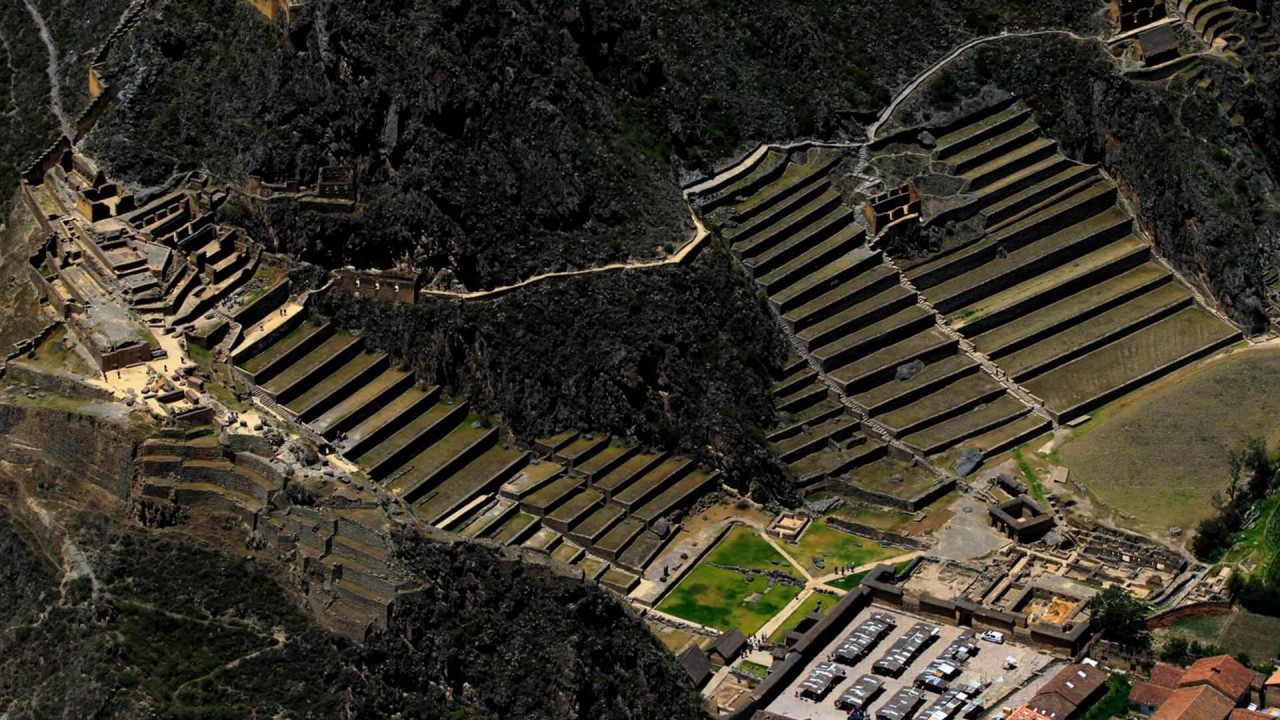 |
| Photo: Perú Travel |
In the 15th century Inca Pachacutec conquered and began to rebuild the town of Ollantaytambo, constructing terraces for farming and an irrigation system. These huge terraces make up what is called the Fortress or Temple Hill. The town became home to Inca nobility. After Inca Pachacutec’s death, the town and its surroundings fell to the hands of his family and then eventually to those of Inca Manco. Inca Manco used Ollantaytambo as a retreat from the attacks of the Spanish. The fortress of Ollantaytambo, originally built for religious purposes, was the site of a major battle, one of the only successful ones against the conquistadors. From high above in the terraces of Ollantaytambo the Incas managed to hold back and defeat the Spanish, in addition they flooded the plain below forcing the Spanish to withdraw. The Spanish had been, briefly, defeated. Manco Inca retreated to the jungle stronghold of Vilcabamba shortly after the battle, knowing that the Spanish would return with even more force. The fortress of Ollantaytambo was soon captured by Pizarro and his men.
The Temple of the Sun was like a calendar for the Incas and had specific purpose especially on the 21st June, the winter solstice and the 21st December, the summer solstice. Guides usually carry booklets or folders with photos, these photos demonstrate the uses of the temple of the sun, the sun dial and other features the Incas built and used. Had the sun temple structure at Ollantaytambo been completed it would have been a spectacular construction. The reason for it being left like an ancient building site are unknown. But more than likely due to with attacks and abandonment. The site of the Ollantaytambo ruins has many more beautifully built structures. As you move away from the Sun Temple the pathway takes you towards Balcon Pata. This is a narrow ledge that leads to two large buildings for you to explore and more terraces. From here you start your decent back down to the ceremonial area at the base of the fortress. Here you will enter an area full of baths and fountains that serve as both an irrigation system and as a religious center. The Princess Bath, Banos de Nusta, being one of the most beautiful, made from granite rock. This fountain has some beautiful examples of the fine Inca carvings and stone work. The Patakancha River flows through and feeds the fountains in this area.
5. Chavín de Huántar
In most people's minds, Chavín is less a town and more a set of ruins – not any old ruins, but the erstwhile ceremonial center of one of Peru's most sophisticated early civilizations, and a Unesco World Heritage Site to boot.
Most visitors zip by on a day trip, ignoring the diminutive colonial town with its whimsical plaza and somnolent streets that sits somewhere on the charm-o-meter between gorgeous Chacas and slightly less gorgeous Huari. If you decide to overnight here, you can visit the impressive archaeological site in the early morning and have it all to yourself.
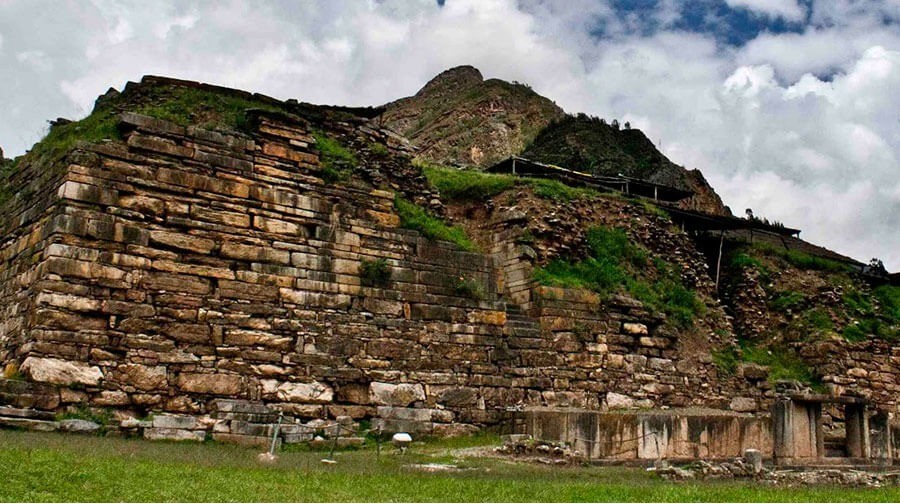 |
| Photo: Trisha Velarmino |
The outstanding Museo Nacional de Chavín, funded jointly by the Peruvian and Japanese governments, houses most of the intricate tenon heads carved with horror-stricken expressions from Chavín de Huántar, as well as the magnificent Tello Obelisk, another stone object of worship with low relief carvings of a caiman and other fierce animals. The obelisk had been housed in a Lima museum since the 1945 earthquake that destroyed much of the original museum, and was only returned to Chavín in 2008. The museum is located around 2km from the ruins on the north side of town – an easy 25-minute walk.
It's best to get an early start and make the most of daytime activities while you can. Chavín goes to bed early; this is no party town. Stifle your late-night pisco-sinking urges until you get back to Huaraz.
Named after the site at Chavín de Huántar, this is considered one of the oldest major cultural periods in Peru, strutting its stuff on the pre-Inca stage from 1200 BC to 500 BC. The Chavín and its contemporaries wielded their influence with great success, particularly between the formative years of 800 BC to 500 BC when they excelled in the agricultural production of potatoes and other highland crops, animal husbandry, ceramic and metal production, and the engineering of buildings and canals. Chavín archaeologists have formerly referred to this time of political ascendance as the Chavín Horizon, though Early Horizon or Late Formative is also used.
 | Visit The Home to World's 'Most Beautiful People' Venezuela is known for its many Miss Universe, Miss World and Miss International wins, along with many iconic, fascinating, and picturesque places to explore. |
 | The Wonderful Nature of Glacier National Park – “Crown of the Continent” Established as a National Park in 1910, Glacier is a land of mountain ranges carved by prehistoric ice rivers, and a natural beauty that tourists ... |
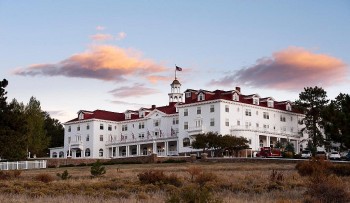 | Stanley Hotel: Inside The Hotel That Inspires “The Shining” Stanley Hotel, the famous "haunted" hotel that once was the inspiration for the horror movie "The Shining", attracts many tourists each year to this unusual ... |
Recommended
 Travel
Travel
Vietnam Through Australian Eyes: Land of Flavor, Warmth, and Timeless Charm
 Travel
Travel
Strategies for Sustainable Growth of Vietnam’s Tourism from International Markets
 Travel
Travel
Vietnam Strengthens Its Presence On The Global Tourism Map
 Multimedia
Multimedia
Phong Nha-Ke Bang National Park Named Top Adventure Travel Site
Popular article
 Travel
Travel
Vietnam Welcomes Record-High Number of International Visitors
 Travel
Travel
Luxury Train From Hanoi To Hai Phong To Be Launched In May
 Travel
Travel
Phong Nha Named Top Budget-Friendly Travel Destination for Spring 2025: Agoda
 Travel
Travel





